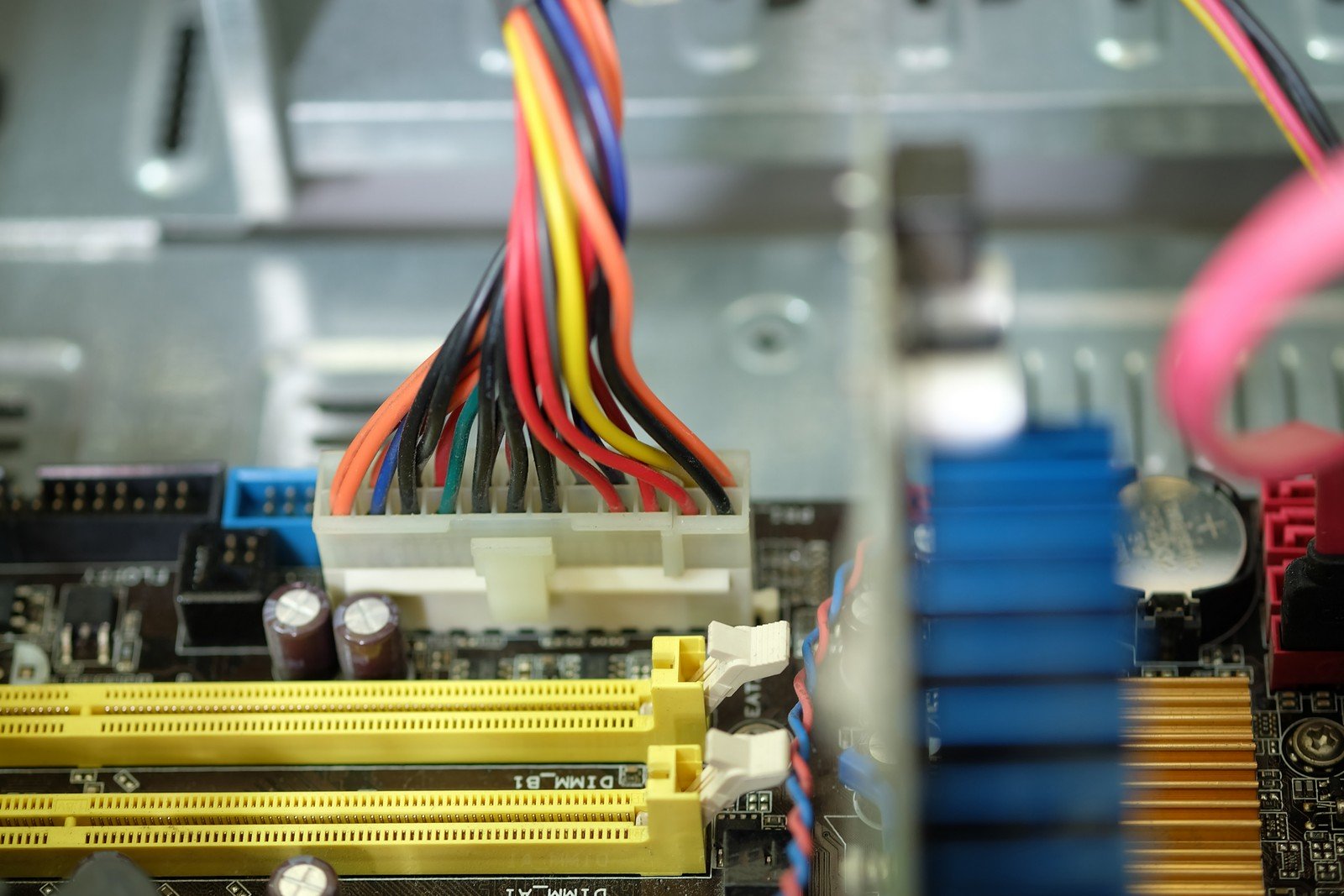24 Pin Power Connector

Quick Navigation:
- 24 Pin Power Connector Definition
- 24 Pin Power Connector Explained Easy
- 24 Pin Power Connector Origin
- 24 Pin Power Connector Etymology
- 24 Pin Power Connector Usage Trends
- 24 Pin Power Connector Usage
- 24 Pin Power Connector Examples in Context
- 24 Pin Power Connector FAQ
- 24 Pin Power Connector Related Words
- Did You Know?
24 Pin Power Connector Definition
The 24 Pin Power Connector is a standard motherboard connector in modern ATX (Advanced Technology eXtended) computer power supplies. This connector provides power to the motherboard and essential components like the CPU, RAM, and chipset. Introduced to support increased power requirements in modern systems, the 24-pin connector replaced the older 20-pin design. The additional 4 pins supply extra power for advanced features and stability in high-performance setups.
24 Pin Power Connector Explained Easy
Imagine a water pipeline delivering water to a house. Just like a single pipeline can’t handle a big house, computers need bigger connectors to power advanced parts. A 24 Pin Power Connector is the "main pipeline" that sends electricity from the power supply to the computer's brain (motherboard) so it can think and work properly.
24 Pin Power Connector Origin
The 24-pin connector evolved from the 20-pin ATX design introduced in 1995. As computers grew more powerful, power requirements increased, leading to the adoption of the 24-pin standard around 2003 with the introduction of ATX12V 2.0 specifications.
24 Pin Power Connector Etymology
The term originates from its design, featuring 24 physical pins in a rectangular block. Each pin corresponds to a specific electrical function, such as power, ground, or signal.
24 Pin Power Connector Usage Trends
The 24-pin connector remains a critical component in modern computing systems. Its usage spans desktop PCs, servers, and high-performance workstations. Although newer standards like ATX12VO aim to reduce pin count by optimizing power delivery, the 24-pin design is still dominant in custom builds and legacy systems.
24 Pin Power Connector Usage
- Formal/Technical Tagging:
- Power Supply Connectors
- Motherboard Power Interface
- ATX Power Connector
- Typical Collocations:
- "24-pin power supply"
- "main motherboard connector"
- "power distribution with 24-pin"
- "ATX standard power cable"
24 Pin Power Connector Examples in Context
- "Ensure the 24 Pin Power Connector is securely attached to the motherboard for stable operation."
- "Modern gaming PCs require a reliable 24-pin connector to support overclocked components."
- "The technician inspected the 24-pin cable for wear and replaced it to resolve the booting issue."
24 Pin Power Connector FAQ
- What is the purpose of the 24 Pin Power Connector?
It provides power from the PSU to the motherboard and key components. - Why did the 24-pin replace the 20-pin design?
To meet the higher power requirements of modern motherboards. - Can I use a 20-pin connector on a 24-pin motherboard?
Some motherboards support this, but it's not recommended for high-power systems. - Are there variations of the 24-pin connector?
The basic design is standardized, but manufacturers may add locking mechanisms for security. - How do I know if my PSU has a 24-pin connector?
Check the PSU specifications or visually inspect for a 24-pin cable. - What happens if the 24-pin connector is loose?
The system may fail to boot or encounter random shutdowns. - Are adapters available for converting 20-pin to 24-pin?
Yes, but they may not provide sufficient power for modern systems. - Do all motherboards require a 24-pin connector?
Most modern motherboards do, but some smaller boards may use alternatives. - How do I safely connect or disconnect the 24-pin connector?
Always power off the PSU and press the clip to release it. - What are common issues with the 24-pin connector?
Loose connections, bent pins, or damaged cables can lead to power issues.
24 Pin Power Connector Related Words
- Categories/Topics:
- Computer Hardware
- Power Distribution
- ATX Standards
Did You Know?
The introduction of the 24-pin power connector was critical in supporting the energy needs of PCI Express slots, enabling advancements like high-end GPUs and efficient multi-core processors. This small upgrade significantly improved the performance capabilities of modern PCs.
PicDictionary.com is an online dictionary in pictures. If you have questions or suggestions, please reach out to us on WhatsApp or Twitter.Authors | Arjun Vishnu | @ArjunAndVishnu

I am Vishnu. I like AI, Linux, Single Board Computers, and Cloud Computing. I create the web & video content, and I also write for popular websites.
My younger brother, Arjun handles image & video editing. Together, we run a YouTube Channel that's focused on reviewing gadgets and explaining technology.



Comments powered by CComment